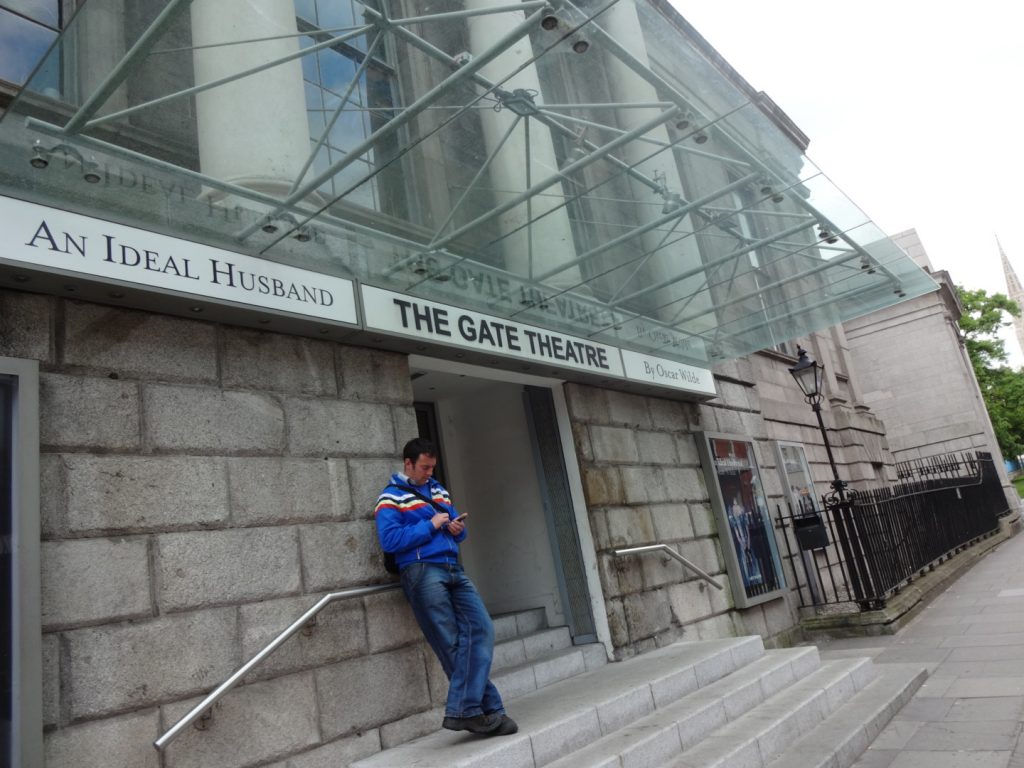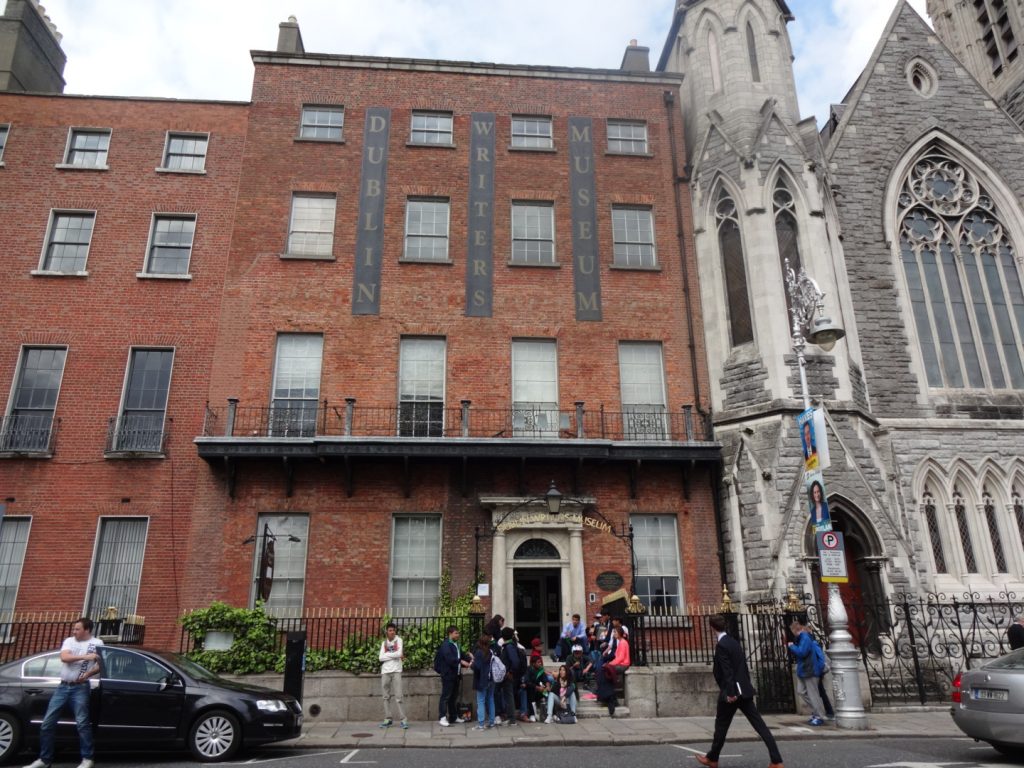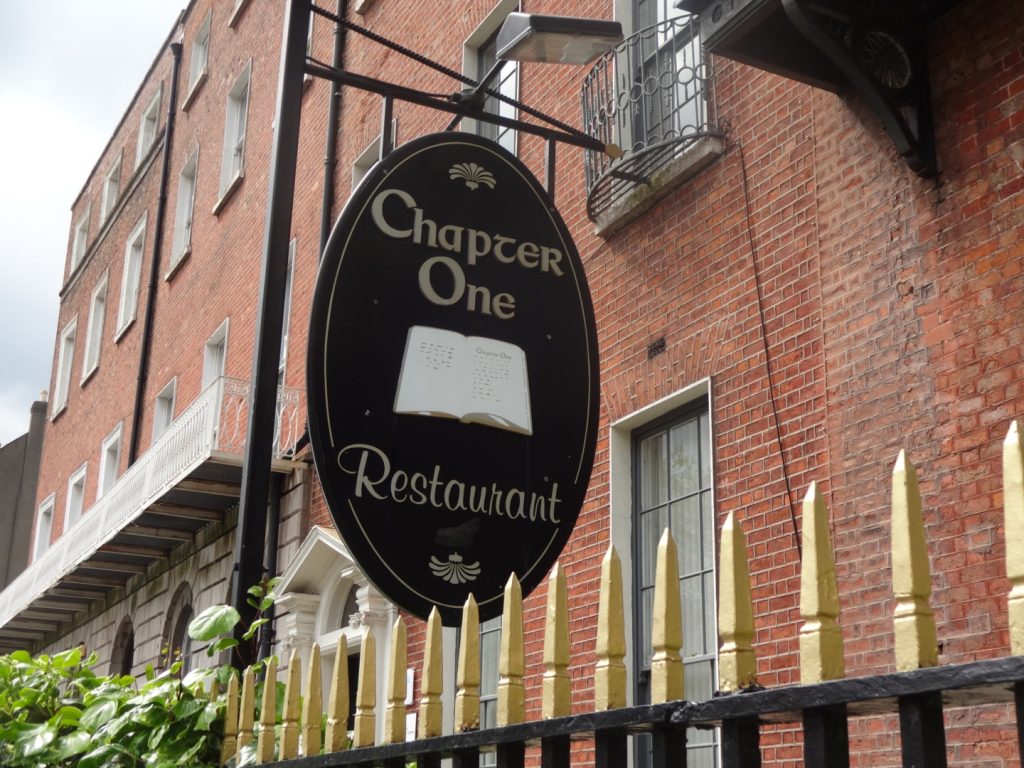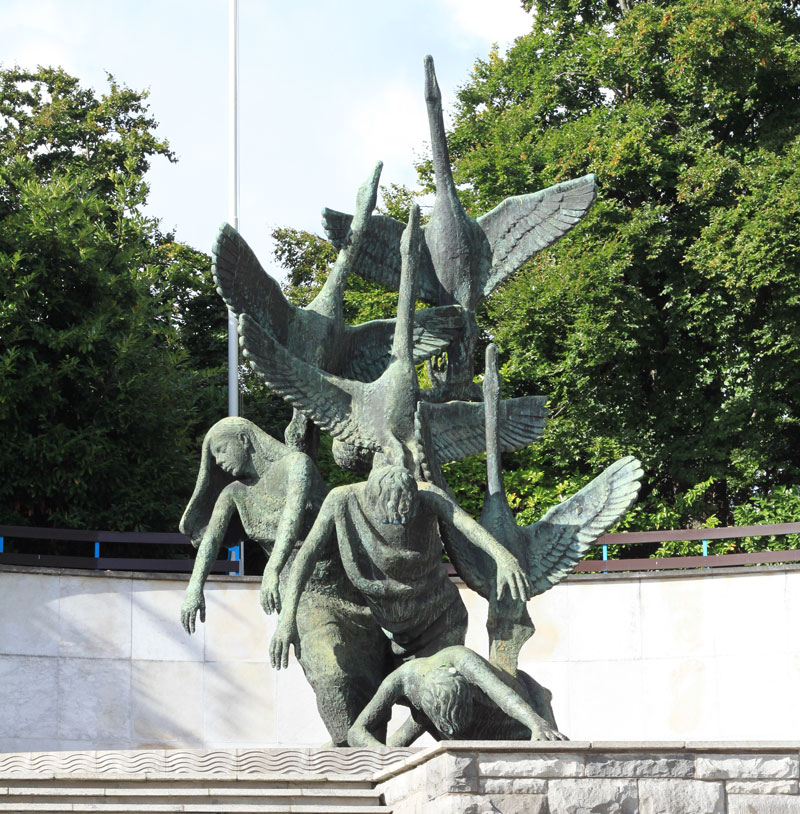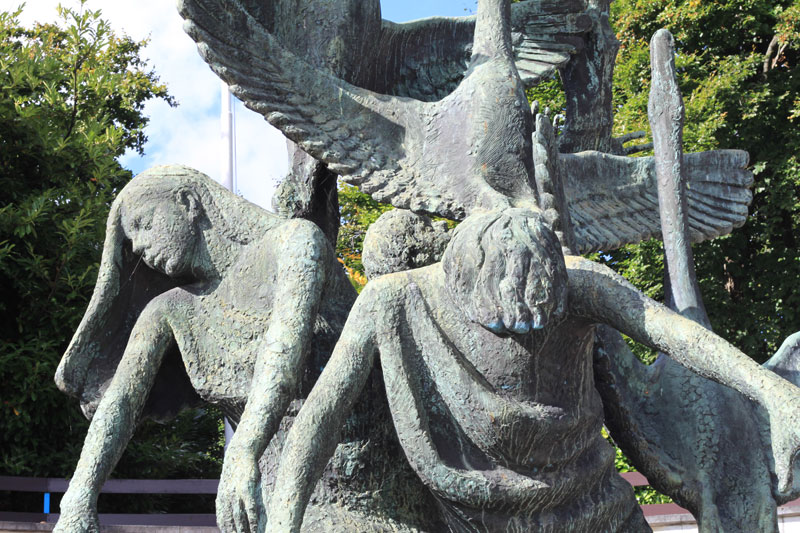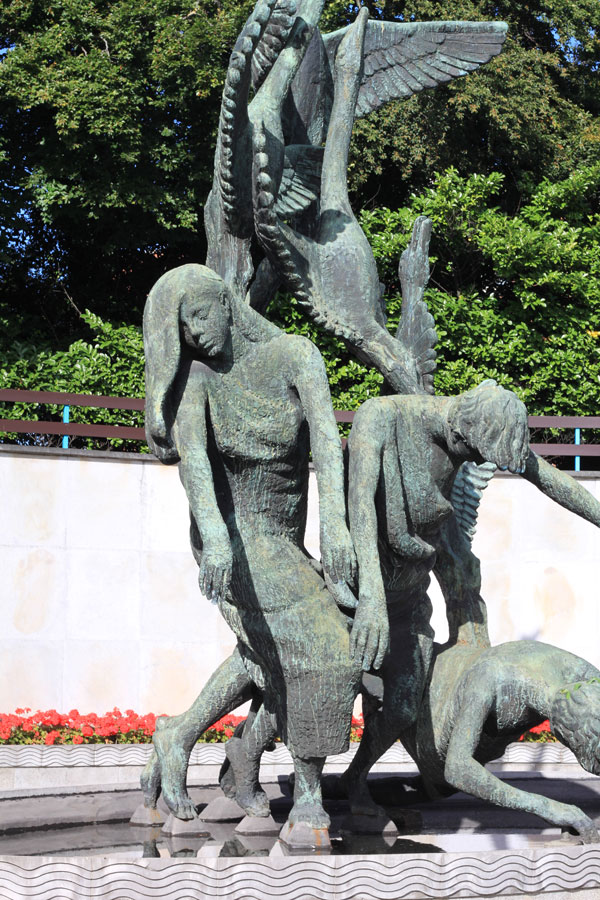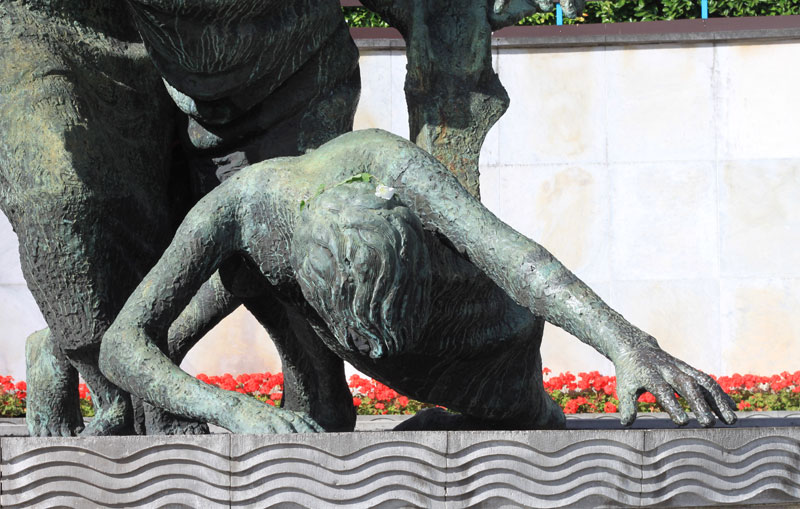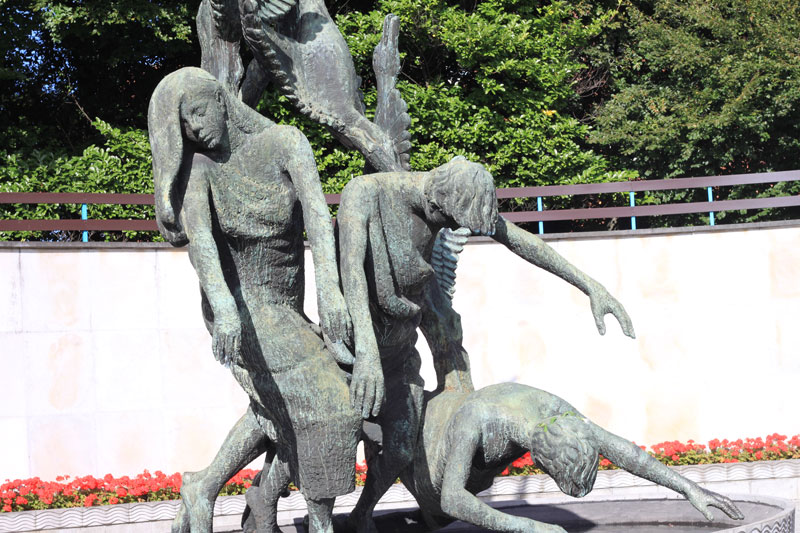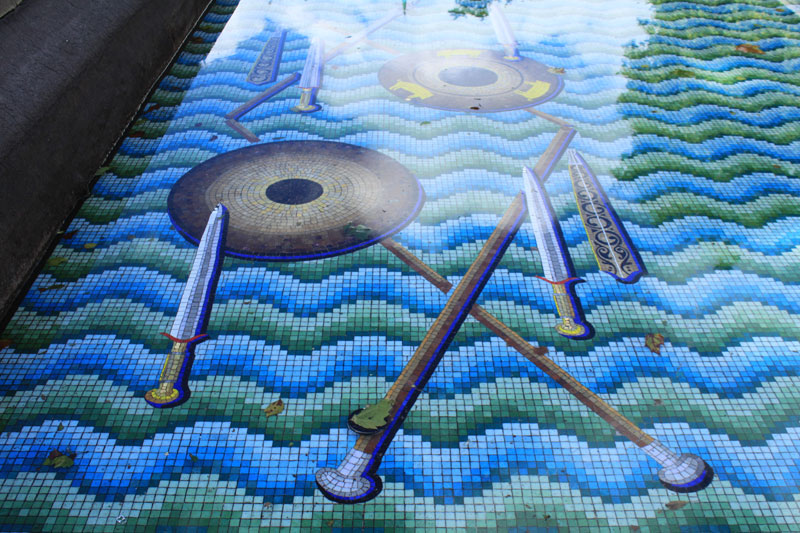What to See in Dublin
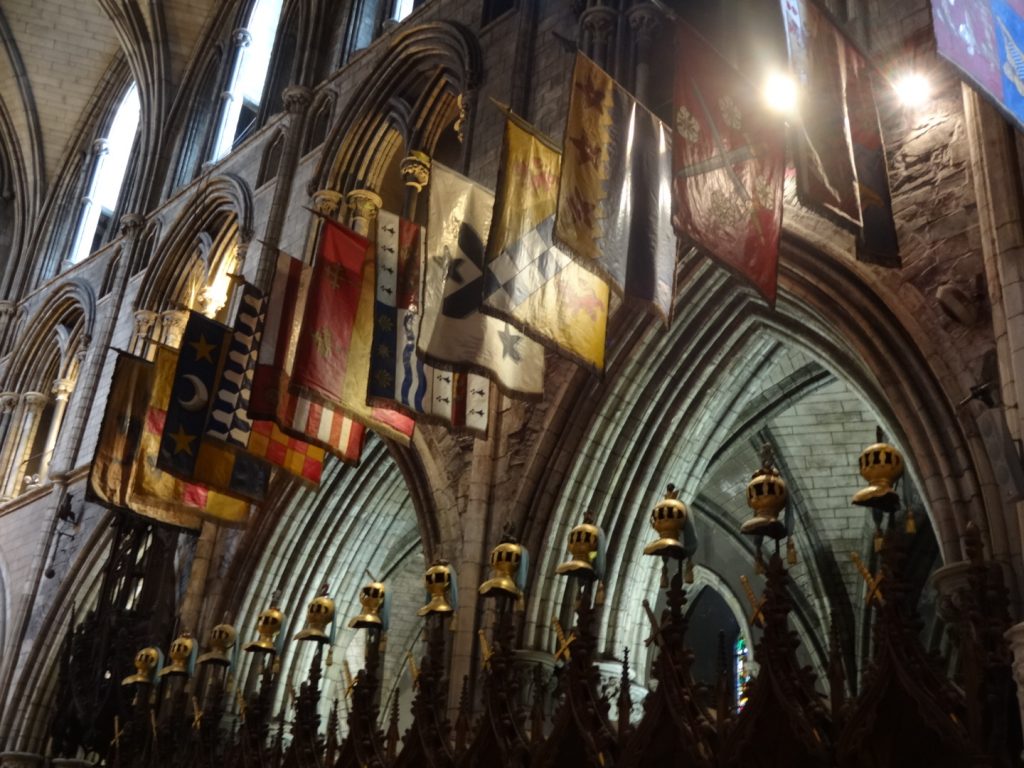 Knights of St. Patrick – St. Patrick’s Cathedral, Dublin
Knights of St. Patrick – St. Patrick’s Cathedral, Dublin
What to see in Dublin – Ireland’s biggest City?
We start almost all of our Thin Places mystical tours in Dublin because that’s where the airport is located. But how to choose what to see in Dublin? But being a bustling international City, Dublin doesn’t seem like a place one would find sites of high energy vibration or a sense of walking in two worlds. But since almost all international tourists enter the country through this city it’s worthwhile to mention some sites worth seeing.
Certainly among those would be the two Cathedrals south of the River Liffey – Christ Church Cathedral and St. Patrick’s Cathedral.
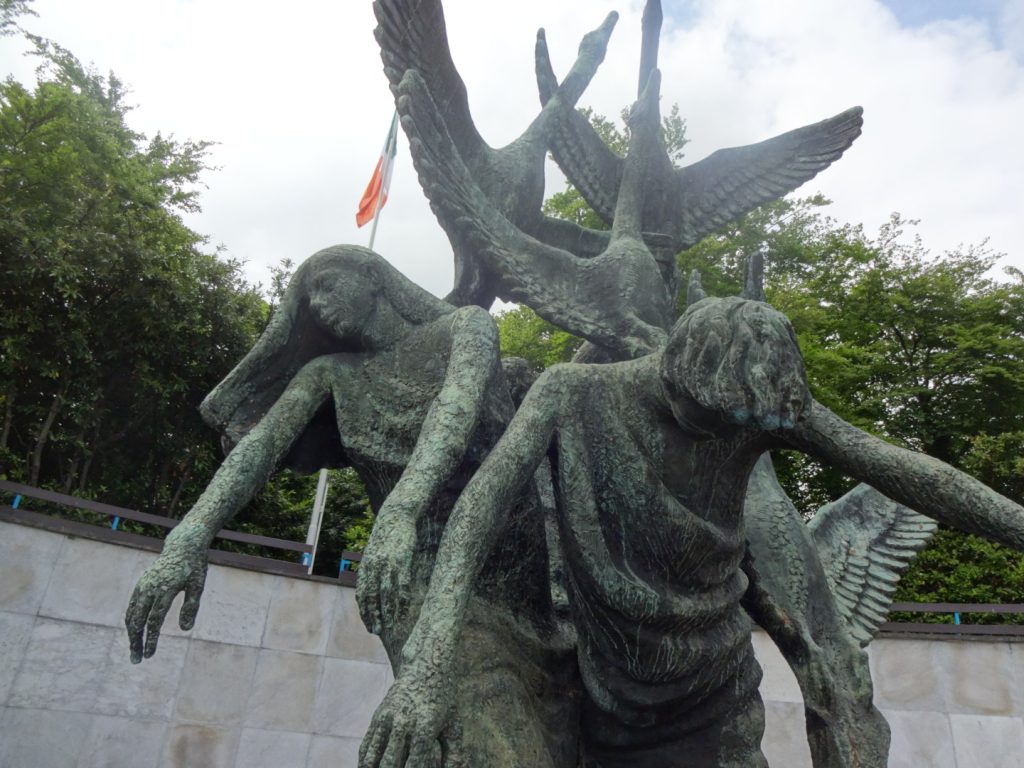 Garden of Remembrance – Children of Lir
Garden of Remembrance – Children of Lir
There are many thin places in Dublin. Ancient Holy Wells of Dublin by Gary Branigan proves that holy sites are in your midst even on the busiest of streets, and Gary has identified about a half dozen right in the City Centre. Most thin places I’ve sensed in Dublin are closely related to the arts. If being in a thin place inspires artists to create and draw on other-worldly energy, then that thin-place energy that inspired them lives in the art. The art itself radiates the energy and connects with those who take the time to let it soak in. One need only to visit the Famine Memorial along the Quay or the Garden of Remembrance in Parnell Square to connect with such energy. Both are within a mile of each other in the City Centre.
But a sweet cluster of thin places are scattered around Parnell Square, named for Charles Stewart Parnell. On the south / east corner where O’Connell Street links with the square are some interesting Georgian houses, with the Gate Theater, anchoring the corner. Actors like Michael Gambon, James Mason and Orson Wells go their start at the Gate. It’s known for its productions of works by Irish playwrights including Samuel Beckett and Oscar Wilde.
Just up from the Gate Theater is the Garden of Remembrance, one of the most inspiring sites in all of Ireland. Across from the Garden of Remembrance on the north side is the Dublin Writers Musuem. It’s an excellent tribute to Ireland’s literary greats from Johnathan Swift to Brendan Behan. There’s numerous letters, books, and artifacts from some of the greatest writers in literary history such as like William Butler Yeats, George Bernard Shaw, Sean O’Casey, Oscar Wilde, Samuel Beckett and James Joyce. Some interesting personal items include Brendan Behan’s union card and typewriter, letters written by W.B. Yeats and a first edition of Bram Stoker’s Dracula. There are dozens of personal items carefully preserved and displayed.
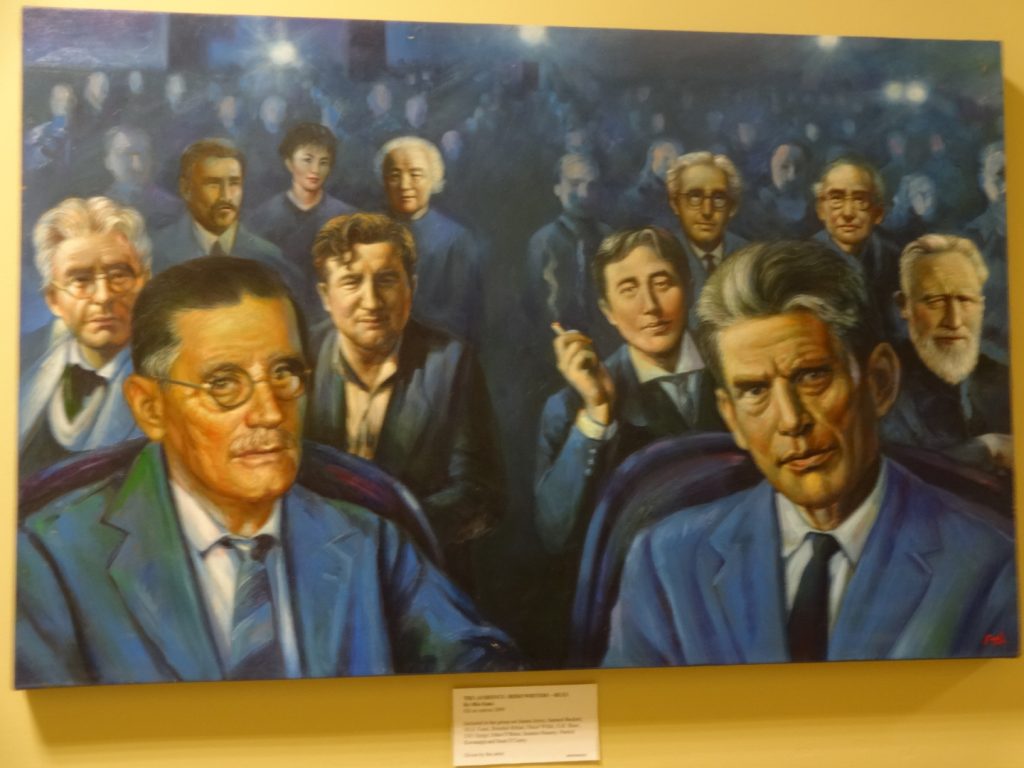 The Audience: Irish Writers – Blue by Mia Funk 2009
The Audience: Irish Writers – Blue by Mia Funk 2009
The Hugh Lane Gallery is also on the north side of the square, was the first public gallery of modern art in the world. It houses a great collection of Francis Bacon’s work. When Bacon’s heirs donated the entire contents of his studio in England to the gallery, careful attention was paid to recreate the studio in the Lane Gallery to closely resemble the original studio.
Chapter One Restaurant situated between the Irish Writers Museum and the Hugh Lane Gallery is one of ten Michelin star restaurants in all of Ireland (2013), a mark of excellence in cuisine and service. The owners take pride in using local artisans and food producers. They believe that drawing on local talent in the way of food growing and producing is what sets them apart from other dining venues and creates opportunities for growth.
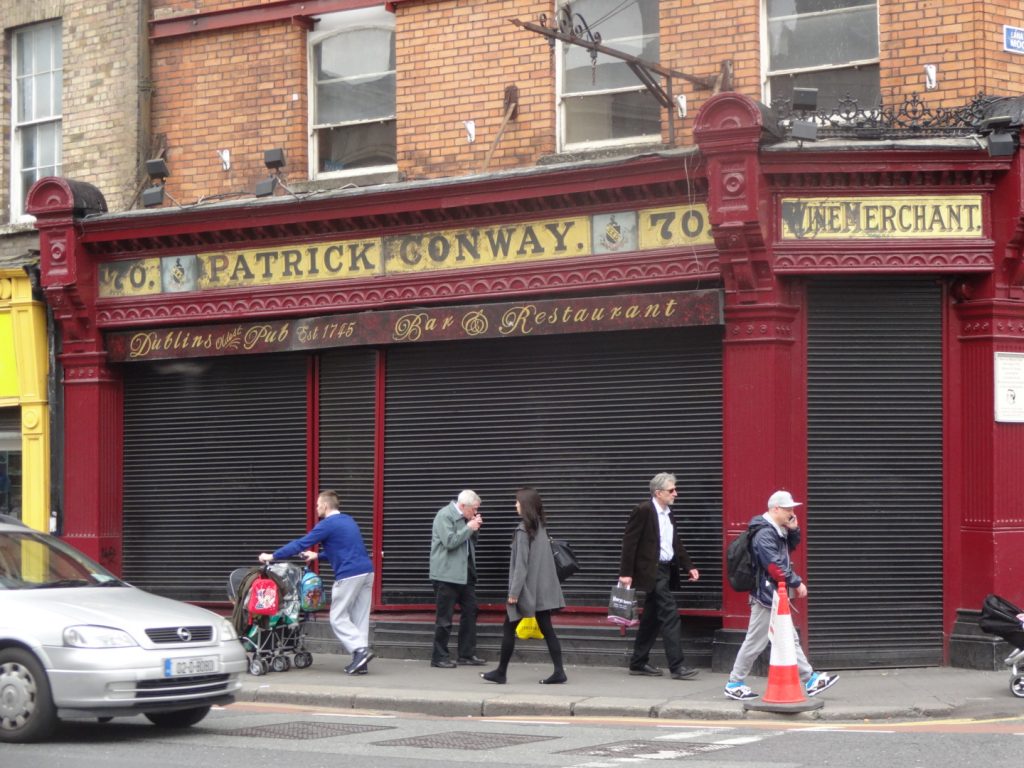 Patrick Conway’s Pub – where Padraic Pearse surrendered during the Eastern Uprising of 1916
Patrick Conway’s Pub – where Padraic Pearse surrendered during the Eastern Uprising of 1916
On the south side is the now shuttered Patrick Conway’s Pub, the oldest pub on Dublin’s north side. This is where Pádraic Pearse surrendered to the British after the Easter Rising failed in 1916 – which is so noted by a plaque on the outside wall. And as if echoing that association with Irish patriots, the Sinn Fein Dublin office and shop is catty corner to Conway’s pub.
Dublin is full of art, from the statues of Irish heroes on O’Connell Street to the Cathedrals (St. Patrick’s and Christ Church) to the roadside devotional statues to saints, the Blessed Virgin and Jesus. There’s much to enjoy about the city that connects with the desire for thin places.
Remembering Heroes and the Children of Lir
Lir was the Lord of the Sea, in the days of the Tuatha de Danann. He had four children – a daughter, Fionnualla and three sons – Aodh and twins Conn and Fiachra. His wife died when the children were still young and Lir married Aoife a woman with magical powers.
Aoife became jealous of the love Lir had for his children and they for him. She also resented how much the children missed their mother. She tried in vain to get a servant to kill the children, thenclost her nerve when she herself set out to kill the children. So she cast a spell on them. She turned the children into the most beautiful swans ever seen, and told them they would be forced to spend nine hundred years as swans – three hundred on Lough Derravaragh, three hundred on the Straits of Moyle and three hundred on the Isle of Inish Glora. They would, however be allowed to keep their voices and as swans they made the most mystical, magical music in all of Ireland.
To end the spell the children would have to hear the bell of the new God, and a holy man would have to ring it.
For three hundred years they lived on Lake Derravaragh and then they flew to the Straits of Moyle and spent another three hundred years. By this time, St. Patrick was converting all of Ireland, and Ireland had accepted this one true God above all gods.
When the last three hundred years of exile on the Isle of Inish Glora were up, they met a man named Mochua. They asked him if he was a holy man and he said he was. He asked them if they were the children of Lir. He had heard about these beautiful swans who sang magically being the cursed children of Lir. They responded that they, in fact were the children of Lir. Mochua set about to make a bell to ring to set the children free.
Just when the bell was finished, the King of Connaught came to the Isle of Inish Glora demanding to take the swans to his castle because his wife was captivated by their beautiful singing and wanted to own them so she could hear that singing whenever she liked. The King was prepared to take them by force if necessary. Just as he began to round up the swans, Mochua rang the bell with fierce enthusiasm. A mist formed around the swans and a great white light seemed to illuminate them suspending them in the air.
The swans began to rise and then fade, and below them the limp forms of four children appeared on the ground. The human bodies of Fionnualla, Aodh, Fiachra and Conn aged 900 years in a few minutes… and they died, ending the race of the Tuatha de Danann.
The spirits of the children of Lir were united with their beloved parents and their presence is felt today by those who choose to remember them.
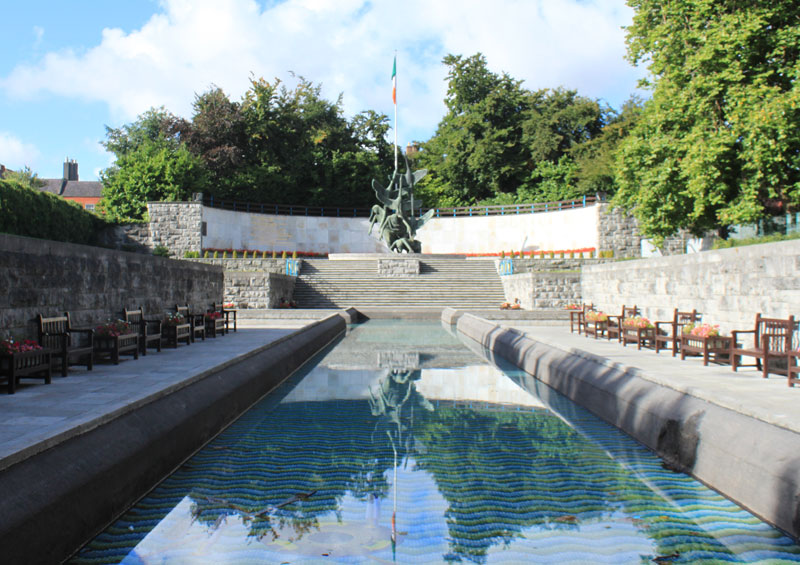 The Garden of Remembrance in Dublin was built in memory of all those who gave their lives fighting in the cause for Irish freedom. The memorial is built on the site where leaders of the 1916 Easter Uprising were held overnight before they were taken to the Kilmainham Gaol to be executed. The dominant feature in the garden is a sculpture representing the Children of Lir who had to live in exile for 900 years, similar to the 900 years of oppression the Irish suffered under British occupation.
The Garden of Remembrance in Dublin was built in memory of all those who gave their lives fighting in the cause for Irish freedom. The memorial is built on the site where leaders of the 1916 Easter Uprising were held overnight before they were taken to the Kilmainham Gaol to be executed. The dominant feature in the garden is a sculpture representing the Children of Lir who had to live in exile for 900 years, similar to the 900 years of oppression the Irish suffered under British occupation.
A reflecting pool has images of swords, spears, shields an implements of warfare painted on the bottom. In the Celtic tradition clans who did battle cast their weapons into the sea or a lake after the battle is over to symbolize the end of hostilities.
The Garden of Remembrance is a thin place.
